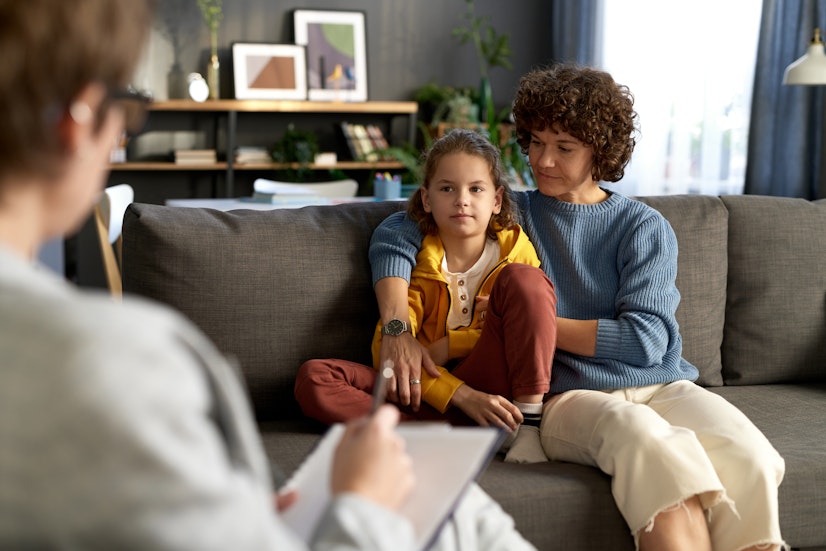Changing the Rules of the Game: Using Exposure Therapy as a Tool to Beat Anxiety
Date: June 16, 2025

Watching your child struggle with anxiety can be one of the most helpless feelings you can experience as a parent. Knowing that simple tasks or environments can provoke such a tremendous amount of worry in your child, urges us, as parents, to shield them from these scary situations. And although accommodating may seem like the right idea at the moment, it will unfortunately only make these circumstances even more challenging to face in the future.
Anxiety has a clever way of playing tricks.. It can convince children and adults alike that specific tasks or situations are unsafe or overly uncomfortable, which drives an urge to avoid said triggers and escape the discomfort at all costs. While avoidance may feel safe in the moment, it reinforces anxiety in the long term, turning once seemingly simple tasks into overwhelming challenges.
As parents, it is crucial to become aware of this cycle and your child’s patterns of avoidance to help them break free. In this post, we will discuss how visualizing anxiety as a “game” and using practices in exposure therapy empower your child and allow them to perceive anxiety more playfully or competitively.
The Strength of Exposure Therapy
Exposure therapy is an evidence-based practice that gently and progressively helps your child confront their fears in a safe and controlled manner. By slowly exposing your child to their fears, they begin to learn that these anxious feelings are not as threatening as they may seem. Through exposure therapy, your child will not only learn to face their greatest fears but also embrace them, building resilience and confidence along the way.
Changing the Rules: Viewing Anxiety as a Game
Try to look at the game like this: when your child is avoiding a feared situation, anxiety is winning. When your child learns to take steps towards their fears, the child starts to win and anxiety loses. A gradual shift from “this is way too scary, I should avoid this” to “Okay anxiety, bring it on, let’s see what you got!” is a profound shift and creates a sense of control. As your child regains control, this helps diminish the power of anxiety and puts your child in the lead!
Let’s Go Over the Rules of the Anxiety Game and How to “Level Up”:
- Step Back and Identify the Anxiety
Help your child label their anxiety. What are they afraid of? What situations trigger avoidance? Make a list of feared situations so that it is easy for you and your child to catch it!
- Stand Down (Permissive Approach)
The second step in helping your child combat their anxiety is to convey to their mind that they actually want to experience these anxious feelings. Help your child view the anxiety as an opportunity to practice being brave. In the face of fear, help your child accept and even encourage their anxiety.
The goal of this level is to motivate your child to allow the anxiety to continue instead of trying to stop it.
Encourage statements like:
“I want this experience.”
“It’s okay that I am anxious.”
“I can handle these feelings.”
- Going Toward (Provocative Approach)
As your child begins to gain confidence and becomes more comfortable with acknowledging their anxiety, it is time to encourage the anxiety to manifest even more. This may involve seeking out a more rapid heartbeat, amplifying their feelings of contamination, or even hoping someone will notice the sweat dripping from their forehead.
Although this may seem counterintuitive, doing so interrupts their dysfunctional pattern of thinking and helps develop a new learning model in their brain, one where they no longer avoid scary situations, thoughts, or sensations, but instead confront them head-on.
Tips to Take Home
To help your child engage with this therapy at home, turn anxiety-provoking tasks into manageable or even playful “games”:
- Small Steps: Begin with minor, feasible challenges. For example, if social situations evoke anxiety for your child, start with helping them simply notice their fears, and then, when they are ready, allow them to say, “Let’s do this, anxiety, you have nothing on me!”
- Playfulness: Keep things as fun and lighthearted as possible. As a parent, it is essential to keep things as carefree and even encourage laughter in the face of anxious situations.
- Celebrate the Courage: Parents, it is essential to focus less on the outcome and more on the courage it takes to face your fears. Praise bravery and progress, no matter how small.
Winning the Game Takes Practice
As you and your child embark on this new approach together, remember that progress is not always linear. But remember to celebrate all the victories, even the tiny ones! Leveling up in the anxiety game is no joke, and your child should be reminded of their wins, no matter how big or small!
What's on your mind today?